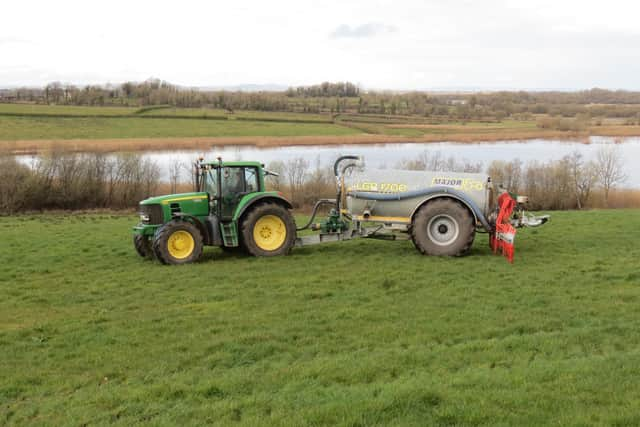NI Water urge farmers to protect water quality when spreading slurry over the next few weeks
and live on Freeview channel 276
This year it is particularly challenging due to the poor weather conditions – on many farms cattle have been housed, slurry tanks are full and the ground is waterlogged with limited opportunities to spread slurry.
This can be very difficult for farmers to manage, but the need to protect water resources must be a priority for everyone. NI Water is urging farmers to be vigilant and play their part in taking every possible precaution when spreading slurry, or other organic manures, to protect watercourses from potential agricultural pollution.
Advertisement
Advertisement
If farmers are unable to empty tanks and slurry storage is limited this winter, it is more important than ever to ensure good clean and dirty water separation on farms.


Separating clean and dirty water can have the following benefits:
- Leave more space for slurry or silage effluent storage, making better use of the storage available. Cutting down dirty and contaminated areas around the farm will reduce the amount of water needed to be collected and handled, saving time and costs on pumping, storage and spreading.
- Reduce contractor bills and/or the time spent spreading slurry. Smaller amounts of slurry and dirty water require less pumping and handling.
Advertisement
Advertisement
- Reduce the risk of causing pollution from nutrients and bacteria washed down farm drains and into local ditches, burns and rivers or into groundwater.
Roy Taylor, NI Water Catchment Manager, said: “There are many sources of dirty water around yards and farms that could reach surface water drains, sheughs, or rivers around the farm.
“Livestock gathered in yards can also deposit a significant amount of manure and slurry on yard surfaces. Rainfall running through middens, silage clamps, feeding areas and dirty yards will collect nutrients and bacteria, all adding to the problem of slurry and dirty water collection and storage, and posing a potential pollution risk from farms if not dealt with.
“If clean and dirty water is separated it can really make better use of the storage farmers have as well as helping to protect our water quality.
Advertisement
Advertisement
“We all know the nutrient value in slurry, but it can also be a dangerous pollutant if not managed correctly and within regulations. If slurry is spread on poor, very wet ground or during or just before wet weather conditions, it can run off the land; this results in valuable nutrients and ammonia ending up in our watercourses.
“This can impact the downstream Water Treatment Works, meaning they have to work harder to ensure water quality is maintained, as well as damaging river water quality.
“In recent years there have also been concerns raised about levels of nutrients in our lakes and rivers. It is important that farmers follow the responsibilities under the Nitrates Action Programme Regulations to ensure that they protect water resources when spreading slurry or manures.”
Nitrates Action Programme advice to farmers is that organic manures including dirty water must not be applied within:
- 20m of lakes;
- 50m of a borehole, spring or well;
- 250m of a borehole used for a public water supply;
Advertisement
Advertisement
- 15m of exposed cavernous or karstified limestone features;
- 10m of a waterway other than lakes; this distance may be reduced to 3 m where slope is less than 10 per cent towards the waterway and where organic manures are spread by band spreaders, trailing shoe, trailing hose or soil injection or where adjoining area is less than 1 hectare in size or not more than 50 m in width.
All contractors, and anyone spreading digestate, must use low emission slurry spreading equipment (LESSE), this also applies to any farms with over 200 livestock cattle units.